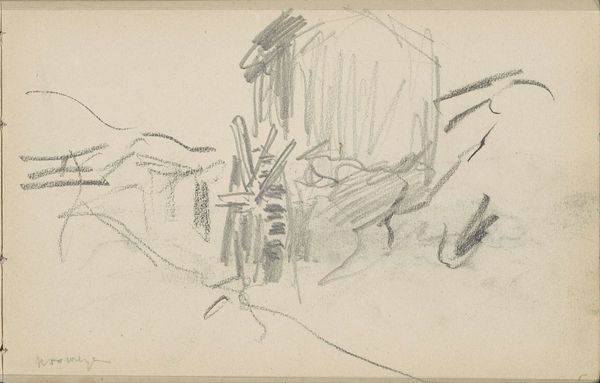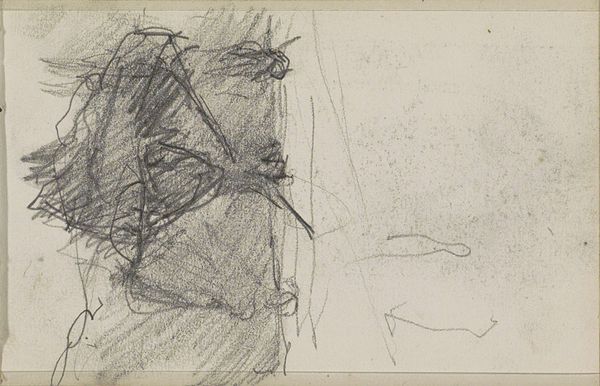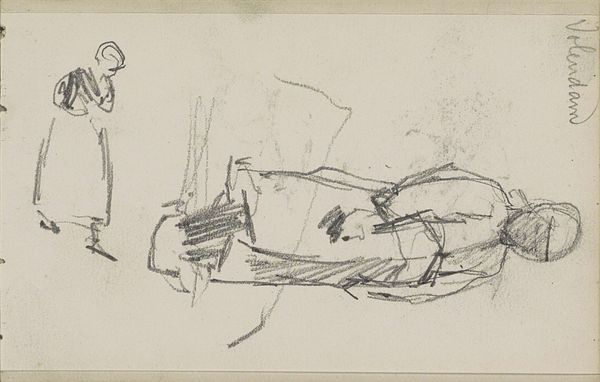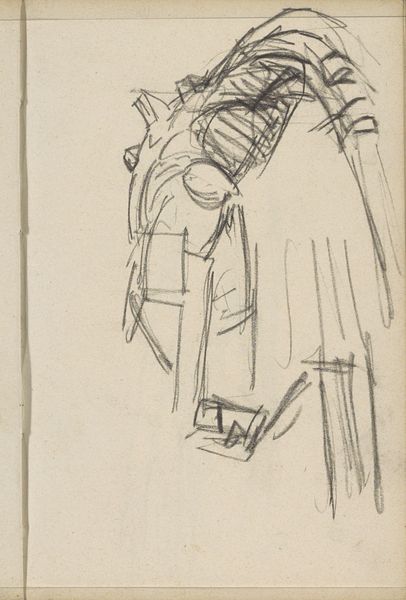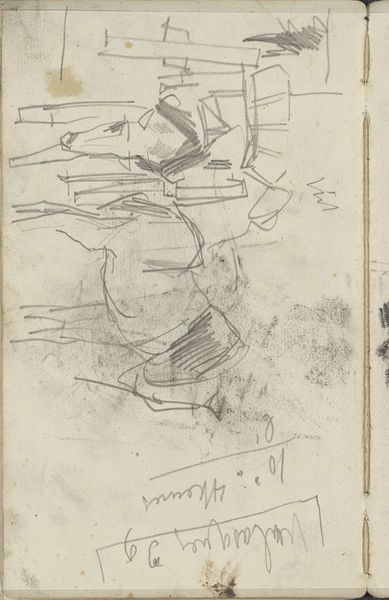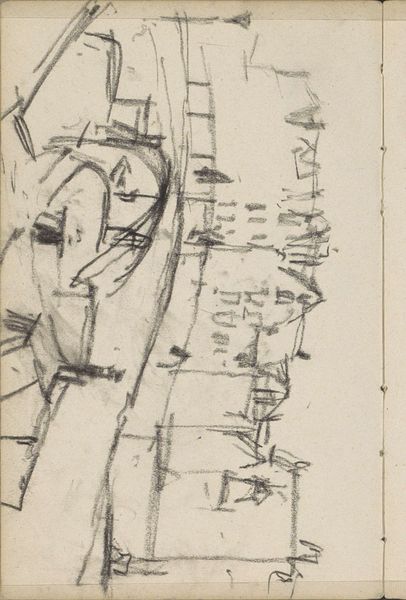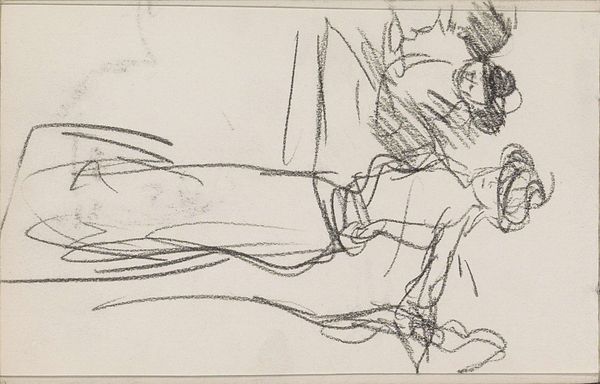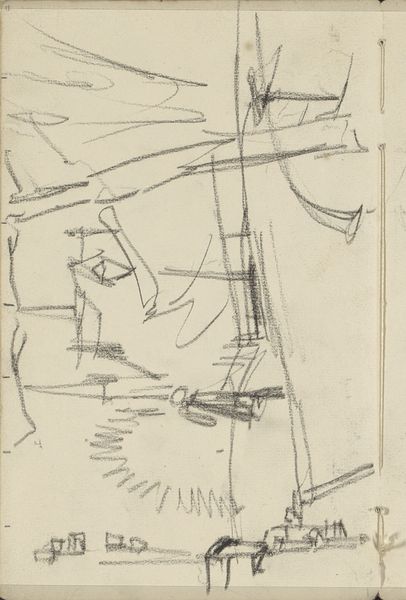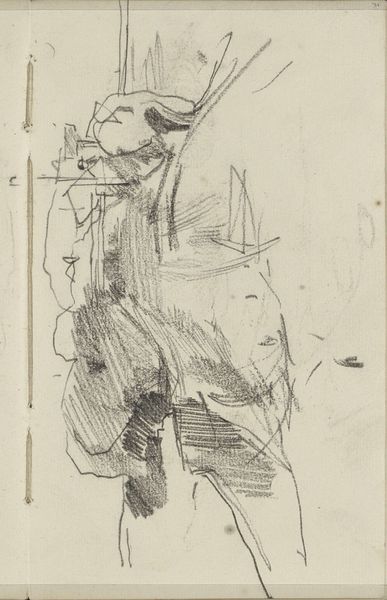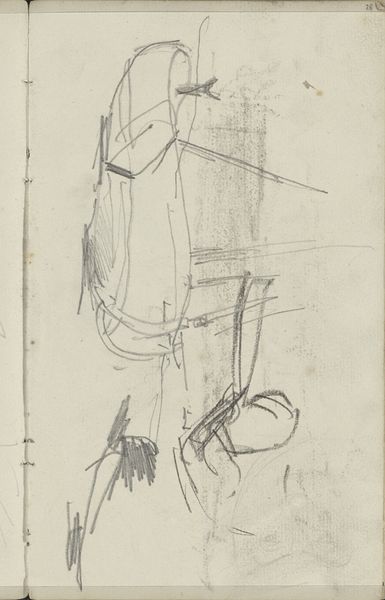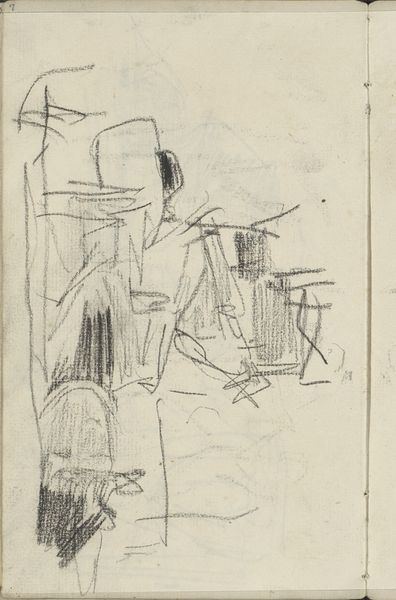
Vrouwen bij een brug over de Lauriergracht te Amsterdam c. 1893s - 1903s
0:00
0:00
Copyright: Rijks Museum: Open Domain
Editor: Here we have "Women by a Bridge over the Lauriergracht in Amsterdam" created sometime between 1893 and 1903 by George Hendrik Breitner. It’s a drawing made with ink, and it strikes me as very spontaneous and immediate, a captured moment. What’s your take on this piece? Curator: It’s more than a captured moment; it's a fragment of social history, meticulously observed and translated through Impressionistic sensibilities. Breitner, embedded in Amsterdam's urban life, constantly documented it. Think about the Lauriergracht – then a bustling area, a nexus of daily activity for working-class women. How do you think Breitner’s choice to portray these women impacts the narrative of Amsterdam’s history? Editor: It suggests an intention to represent the everyday, almost as if aiming to elevate it. He focused on regular women as his subject matter, it reveals an egalitarian spirit in capturing the ordinary. Curator: Exactly. Breitner sought to break free from the established art circles and depict unvarnished reality. It challenges conventional depictions of women within art during that period. Now, look at the drawing’s technique – the frenetic lines, the absence of precise detail. What does this convey to you? Editor: A sense of dynamism and also a more democratized approach of subject and technique…he just goes with the moment instead of making a perfectly polished composition. The chaos evokes an urban atmosphere… the feeling of it. Curator: Precisely. Breitner actively distanced himself from academic norms to depict a city not for elites, but of and for its people. It's a significant statement about who gets represented and whose experiences are valued in the art world. Editor: This conversation gave me so much food for thought to understand how much context is important. Curator: Agreed, art is not isolated; understanding art as social mirror, as a record or even agent of change makes the work speak.
Comments
No comments
Be the first to comment and join the conversation on the ultimate creative platform.
